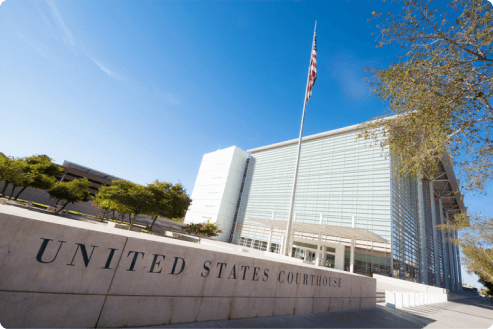
New York, NY 10003
- $8.5 Billion Recovered
- Serves Clients Nationwide
- Rated #1 by U.S. News & World Report for 2022
Many Arizonans were exposed to asbestos from mining and industry. Those with mesothelioma or asbestos lung cancer may qualify to file a claim. A skilled Arizona mesothelioma lawyer can help people get compensation.

The first step in filing an asbestos lawsuit in Arizona is to speak with an experienced lawyer. They can assess your eligibility and guide you through next steps. Asbestos claims include lawsuits and trust fund claims. Veterans may also qualify for benefits and care through the U.S. Department of Veterans Affairs.
Arizona is a comparative fault state. This means you can recover damages even if your asbestos exposure is partially your fault. But your damages may be reduced if you’re found partially responsible.
Comparative Negligence in Arizona
A defendant may argue a plaintiff contributed to their own asbestos exposure. For example, they may claim the plaintiff didn’t wear protective gear. They may argue the plaintiff ignored safety rules, risking exposure despite knowing the risks.
This underscores the importance of working with a law firm with experience in cases like yours. They can effectively build your case to prove the defendants are at fault for your exposure.

Get help finding an attorney who knows the process and can get you and your family the compensation you deserve.
Get Help NowAn experienced mesothelioma lawyer is key for those who plan to file an asbestos claim. Your Arizona lawyer can guide you on complex legal issues in the state. For example, there is a statute of limitations for filing your claim. This means you have a limited amount of time to file your mesothelioma lawsuit.
The statute of limitations in Arizona is 2 years from the time of diagnosis for a personal injury lawsuit. It’s 2 years from the death of a loved one for a wrongful death lawsuit. Your lawyer will assess how to proceed or if there are exceptions in your specific case. Filing sooner rather than later is ideal to help you get compensation as soon as possible.
Top Arizona mesothelioma law firms have knowledge of the laws and rules that affect your case. They can guide you to your best options. They can help you file a claim with an asbestos trust fund and file a lawsuit.
It’s important to work with a law firm with a record of success. They’ll have achieved settlements and verdicts in cases similar to yours.
National mesothelioma law firms can also help people in Arizona with their legal claims. While these firms may not have a local office in Arizona, they have experienced attorneys licensed to practice in the state. They’re also able to help you file in another state. If your exposure happened outside Arizona, your lawyer may recommend filing in that state. They may also recommend filing where the defendant is based.
A top national firm will be able to share its record of success in Arizona. For example, Simmons Hanly Conroy secured $4.1 million for a U.S. Army veteran and welder in Winkelman, Arizona. Simmons Hanly Conroy also helped secure $4.3 million for a truck driver in Prescott diagnosed with mesothelioma and $17.4 million for a medical technologist in Phoenix.






Working with a nationwide law firm means your lawyers will travel to you. National firms understand the challenges of mesothelioma. They know their clients are in treatment, which can hinder travel. They’ll travel to you for interviews and depositions free of charge.
Arizona’s long history with the toxic mineral has led to illnesses related to asbestos. Asbestos claims in the state have resulted in compensation for exposure. Families have used their mesothelioma settlements and verdicts to cover medical expenses and lost wages.
Notable Asbestos Settlements and Verdicts in Arizona
The average amount of your mesothelioma compensation may vary. Many factors will impact the amount you may be awarded. Every mesothelioma case differs. Talk to your attorney about any factors that could affect your claim.
In Arizona, state and federal laws regulate asbestos. The Arizona Department of Environmental Quality enforces state asbestos laws. It also helps enforce federal rules like the Asbestos National Emission Standard for Hazardous Air Pollutants program.
Arizona Asbestos Laws and Regulations
In 2004, the Arizona Department of Environmental Quality and the attorney general sued Honeywell International Inc. for environmental pollution, including asbestos. In 2008, Honeywell settled the lawsuit for $6 million.
Asbestos mines in Arizona were directly responsible for the asbestos exposure of workers and residents. Mining in the state dates back to 1872. Miners were in direct contact with raw asbestos, presenting significant risk.
The Gila Salt River region had high asbestos exposure. Hundreds of miners and laborers had serious health problems as a result. Several Native American reservations owned asbestos prospects. Local and national businesses distributed the fibers. By the early 1980s, most mining districts closed.
Sites Known for Asbestos Exposure
The state’s asbestos mines weren’t the only sources of exposure. A 2008 U.S. Geological Survey report notes additional contamination. Limestone deposits in the counties of Gila and Pinal were polluted with toxic asbestos.
Buildings, schools and homes in Arizona built before 1980 likely contain asbestos. This can include asbestos products like flooring, insulation, cement or roofing shingles.
Occupational asbestos exposure is the primary cause of mesothelioma. Asbestos in the workplace is the No. 1 cause of global work-related deaths. Exposure at work is also documented in Arizona industries besides mining.
Arizona Industries Known for Asbestos Exposure
Veterans also experienced asbestos exposure in the military during the course of their jobs. Asbestos was heavily used in all branches of the military. Arizona is home to a number of military bases where asbestos was used in machinery and construction materials.
Recommended ReadingYour web browser is no longer supported by Microsoft. Update your browser for more security, speed and compatibility.
If you are looking for mesothelioma support, please contact our Patient Advocates at (855) 404-4592
The Mesothelioma Center at Asbestos.com has provided patients and their loved ones the most updated and reliable information on mesothelioma and asbestos exposure since 2006.
Our team of Patient Advocates includes a medical doctor, a registered nurse, health services administrators, veterans, VA-accredited Claims Agents, an oncology patient navigator and hospice care expert. Their combined expertise means we help any mesothelioma patient or loved one through every step of their cancer journey.
More than 30 contributors, including mesothelioma doctors, survivors, health care professionals and other experts, have peer-reviewed our website and written unique research-driven articles to ensure you get the highest-quality medical and health information.
My family has only the highest compliment for the assistance and support that we received from The Mesothelioma Center. This is a staff of compassionate and knowledgeable individuals who respect what your family is experiencing and who go the extra mile to make an unfortunate diagnosis less stressful. Information and assistance were provided by The Mesothelioma Center at no cost to our family.LashawnMesothelioma patient’s daughter


Lahav, J. (2025, January 7). Arizona Mesothelioma Lawyers. Asbestos.com. Retrieved April 28, 2025, from https://www.asbestos.com/mesothelioma-lawyer/arizona/
Lahav, Joe. "Arizona Mesothelioma Lawyers." Asbestos.com, 7 Jan 2025, https://www.asbestos.com/mesothelioma-lawyer/arizona/.
Lahav, Joe. "Arizona Mesothelioma Lawyers." Asbestos.com. Last modified January 7, 2025. https://www.asbestos.com/mesothelioma-lawyer/arizona/.
Co-Founding Partner at Weitz & Luxenberg
Co-Founding Partner at Weitz & Luxenberg
Managing Partner at Weitz & Luxenberg
Associate Attorney at Weitz & Luxenberg
Associate Attorney at Weitz & Luxenberg
Associate Attorney at Weitz & Luxenberg
Associate Attorney at Weitz & Luxenberg
Associate Attorney at Weitz & Luxenberg
Associate Attorney at Weitz & Luxenberg
Managing Partner at Simmons Hanly Conroy
Managing Partner at Simmons Hanly Conroy
Managing Partner at Simmons Hanly Conroy
Managing Partner at Simmons Hanly Conroy
Managing Partner at Simmons Hanly Conroy
Founding Partner at Meirowitz & Wasserberg, LLP
Founding Partner at Meirowitz & Wasserberg, LLP
Managing Partner at Meirowitz & Wasserberg, LLP
Senior Trial Lawyer at Meirowitz & Wasserberg, LLP
Associate Attorney at Meirowitz & Wasserberg, LLP
Associate Attorney at Meirowitz & Wasserberg, LLP
Associate Attorney at Meirowitz & Wasserberg, LLP
Associate Attorney at Meirowitz & Wasserberg, LLP
Associate Attorney at Meirowitz & Wasserberg, LLP
Associate Attorney at Meirowitz & Wasserberg, LLP
Associate Attorney at Meirowitz & Wasserberg, LLP
A mesothelioma lawyer who specializes in asbestos litigation reviewed the content on this page to ensure it is legally accurate.
William A. Davis is an attorney specializing in complex commercial litigation, with an emphasis in health care disputes, at a firm he founded in Washington, D.C. He also serves as senior counsel at The Peterson Firm.
Our fact-checking process begins with a thorough review of all sources to ensure they are high quality. Then we cross-check the facts with original medical or scientific reports published by those sources, or we validate the facts with reputable news organizations, medical and scientific experts and other health experts. Each page includes all sources for full transparency.
Please read our editorial guidelines to learn more about our content creation and review process.
